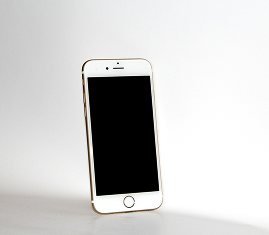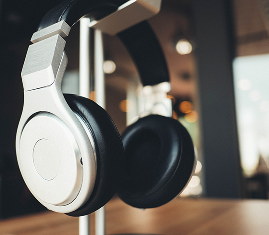Imagine a world where art and technology collide, creating a mesmerizing sensory experience transcending traditional boundaries. This is the captivating realm of sculptural audio installations, where sound becomes tangible, and sculptures come alive with the power of sound. By seamlessly blending visual art and audio technology, these installations immerse you in a dynamic and interactive environment where every sculpture becomes a conduit for auditory expression. In this article, we will explore the captivating intersection of art and technology, delving into the innovative world of sculptural audio installations and their enchanting experiences.
Understanding Sculptural Audio Installations
Defining Sculptural Audio Installations
Sculptural audio installations refer to a unique form of artistic expression that combines sound and sculpture to create immersive and interactive experiences for the audience. They involve integrating various elements such as technologies, spatial design, and innovative sound manipulation forms to push traditional art’s boundaries and create multi-sensory experiences.
The Purpose and Functionality of Audio Installations
The purpose of sculptural audio installations goes beyond mere aesthetic appeal. These installations aim to engage the audience on multiple levels, triggering emotional and intellectual responses through sculpture and sound. By creating immersive environments, these installations invite individuals to interact with the artwork in ways that transcend traditional forms of visual art. The functionality of audio facilities lies in their ability to manipulate sound, space, and audience engagement to create a unique and dynamic experience.
The Evolving Dynamic between Sound, Space, and Audience
Sculptural audio installations thrive on the dynamic relationship between sound, space, and the audience. Sound is not only used as an auditory medium but also as a spatial element that can be manipulated to create new dimensions and perspectives within the installation. Space plays a crucial role in determining how sound is perceived and experienced by the audience, as it can enhance or alter the acoustics of the building. The audience becomes an active participant in the artistic creation, as their presence and movements within the space can influence the progression and outcome of the installation.
History and Evolution of Sculptural Audio Installations
Early Experiments of Sound and Sculpture
The roots of sculptural audio installations can be traced back to the early 20th century when artists began exploring the integration of sound and sculpture. The Italian futurist movement, led by artists such as Luigi Russolo and Filippo Tommaso Marinetti, sought to incorporate the noise of the industrial age into their artistic creations. This experimentation laid the foundation for the future development of sculptural audio installations.
Influence of Technology on Development
Advancements in technology, particularly in sound reproduction, played a pivotal role in shaping the evolution of sculptural audio installations. The invention of recorded sound and the subsequent development of audio equipment allowed artists to manipulate and reproduce sound in previously unimaginable ways. This newfound technological prowess allowed artists to explore the combination of sound and sculpture in greater depth.
Famous Historical Audio Installations
Throughout history, various artists have made significant contributions to sculptural audio installations. One notable example is the Futurist noise machines created by Luigi Russolo, designed to produce a range of unique and unconventional sounds. Another famous historical audio installation is Marcel Duchamp’s “The Bride Stripped Bare by Her Bachelors, Even,” which incorporated a motorized rotation system to generate sound.
Evolution into a Recognized Art Form
As technological advancements continued to reshape the possibilities of artistic expression, sculptural audio installations gradually gained recognition as a distinct and legitimate art form. Exploring different mediums, such as video, virtual reality, and interactive software, allowed artists to create increasingly dynamic and immersive installations. As a result, sculptural audio installations began to be exhibited in prestigious art museums and galleries worldwide, solidifying their place in the contemporary art landscape.
Role of Technology in Sculptural Audio Installations
Administration of Interactive Software
Interactive software plays a crucial role in creating and operating sculptural audio installations. Artists utilize specialized software programs to control and manipulate various aspects of the building, such as sound generation, spatial mapping, and audience interaction. These software programs allow for real-time adjustments and customization, enabling artists to create highly responsive and dynamic installations.
Use of Advanced Sound Systems
Advanced sound systems are fundamental in sculptural audio installations to ensure accurate reproduction and manipulation of sound. Artists rely on high-quality speakers, amplifiers, and mixing consoles to deliver a rich, immersive auditory experience. Additionally, the integration of surround sound systems and spatial audio technology further enhances the sense of immersion and realism within the installation.
Incorporation of 3D Printing and Modeling for Structures
Advances in 3D printing and modeling have revolutionized the creation of sculptural elements in audio installations. Artists can design and fabricate intricate and complex structures that would be otherwise challenging to realize using traditional methods. 3D printing allows for exploring unconventional forms and materials, expanding the boundaries of sculpture and enabling artists to create truly unique and innovative installations.
Role of Digital Processing in Sound Manipulation
Digital signal processing (DSP) is vital in sculptural audio installations, allowing artists to manipulate, shape, and transform sound in real time. Through DSP techniques such as filtering, modulation, and spatialization, artists can create intricate and dynamic soundscapes that interact harmoniously with the sculptural elements. The integration of DSP technology enables artists to experiment and push the boundaries of sound, adding depth and complexity to the overall installation.
Impact of Sculptural Audio Installations on Performance and Experience
Changes in Audience Engagement
Sculptural audio installations offer a unique and immersive experience beyond passive observation. By inviting the audience to interact with the building actively, these artworks encourage a more engaged and participatory relationship between the viewer and the artwork. This shift in audience engagement transforms the traditional one-directional art-viewer relationship into a dynamic and reciprocal experience, where the viewer becomes an integral part of the artistic creation.
Creation of Immersive Environmental Experiences
One of the critical impacts of sculptural audio installations is the creation of immersive environmental experiences. By integrating sound, sculpture, and spatial design, artists can transport the audience into an alternate reality where they are fully immersed in a multi-sensory experience. The combination of visual, auditory, and tactile stimuli creates a deeply immersive and transformative experience, allowing the audience to escape the constraints of their everyday lives momentarily.
Expansion of Auditory Experiences
Sculptural audio installations have expanded the possibilities and boundaries of auditory experiences. By manipulating sound in three-dimensional space, artists can create sonic environments that are not limited by the constraints of traditional concert halls or performance spaces. Integrating advanced sound systems and spatial audio technology allows for a heightened sense of sound localization and movement, offering audiences a truly immersive and multi-dimensional auditory experience.
Famous Sculptural Audio Installations and Artists
Featured Works and Their Technological Components
Numerous examples of famous sculptural audio installations have captivated audiences worldwide. One prominent example is Rafael Lozano-Hemmer’s “Pulse Spiral,” which involves a massive spiral of light and sound created using LED lights and speakers. This installation utilizes interactive software to synchronize the viewer’s heartbeat with the pulsating lights and audio, creating a captivating and personalized experience.
Notable Artists in the Field
Various artists have made significant contributions to the field of sculptural audio installations. Susan Philipsz, for instance, is known for her large-scale sound installations that explore themes of memory, place, and identity. Janet Cardiff and George Bures Miller are renowned for their immersive audio installations incorporating storytelling and uncanny narratives. These artists have pushed the boundaries of audio facilities, creating thought-provoking and emotionally charged experiences.
Influence on Art and Sound Design Communities
Sculptural audio installations have influenced the art community and garnered attention from the sound design industry. Integrating sculpture and sound presents unique opportunities for good designers to explore new methodologies and technologies. Similarly, artists working in sound and sculpture have inspired traditional sculptors, painters, and musicians to consider incorporating sound into their practice, blurring the boundaries between different artistic disciplines.
Challenges and Constraints of Sculptural Audio Installations
Technological Limitations
Despite technological advancements, sculptural audio installations still face certain limitations and constraints. The complexity of integrating hardware, software, and structural elements can pose challenges regarding synchronization and technical reliability. The reliance on technology also means that these installations are susceptible to technical failures or compatibility issues, requiring constant monitoring and maintenance to ensure a seamless experience for the audience.
Practical Challenges Setting Up Installations
The practical challenges involved in setting up sculptural audio installations can be significant. These installations often require large amounts of space, specialized equipment, and expert sound engineering and structural design knowledge. Coordinating the logistics of installation, transport, and assembly can be time-consuming and costly. Additionally, securing suitable venues and obtaining necessary permissions can present hurdles for artists seeking to exhibit their work in public spaces.
Achieving Effective Audience Engagement
Creating effective audience engagement in sculptural audio installations can be a delicate balance. The building must encourage active participation without overwhelming or distracting the audience. Achieving a seamless integration of sound, sculpture, and interactive elements requires careful consideration of spatial design, user interface, and sensory stimuli. Artists must also consider the audience’s diverse backgrounds and preferences to ensure that the installation resonates with a wide range of individuals.
Future Directions for Sculptural Audio Installations
Emerging Technologies and Their Potential Applications
The future of sculptural audio installations holds immense potential with the emergence of new technologies. Augmented reality (AR) and virtual reality (VR) present exciting possibilities for creating immersive and interactive experiences for the audience. Integrating artificial intelligence (AI) and machine learning algorithms could enable installations to adapt and respond in real time based on the audience’s behavior and preferences. Additionally, advancements in haptic technology could further enhance the tactile experience within sculptural audio installations.
Potential Growth and Expansion of the Field
As sculptural audio installations gain recognition as a legitimate art form, the field is expected to experience significant growth and expansion. Art institutions and museums worldwide are increasingly showcasing these installations, allowing artists to experiment and showcase their work. The growing interest from artists and audiences in immersive and multi-sensory experiences suggests that sculptural audio installations will continue evolving and captivate audiences.
The Future Intersection of Art and Technology in Audio Installations
The future of sculptural audio installations lies in the intersection of art and technology. As technology advances, artists can access increasingly powerful tools and mediums to create innovative and immersive audio installations. This fusion of art and technology will push the boundaries of traditional art forms, fostering new collaborations and creative possibilities. The synergy between art and technology will continue redefining the concept of sculptural audio installations and revolutionizing how we perceive and experience art.
Case Study: An In-depth Look at a Sculptural Audio Installation
Background of the Installation
One notable case study is the installation “Sonic Blossom” by artist Lee Mingwei. This installation consists of a series of interactive sound sculptures that evoke the experience of a blossoming flower. The building incorporates delicate and intricate sculptural elements, high-quality speakers, and meticulously crafted compositions.
Use of Technology in the Installation
Lee Mingwei utilizes various technologies to create a seamless and immersive experience in “Sonic Blossom.” Advanced sound systems are used to reproduce the intricately designed sound compositions, ensuring high audio fidelity. The sculptural elements are meticulously fabricated using 3D modeling and printing techniques, allowing for precise details and complex forms.
Audience Reception and Impact
“Sonic Blossom” has garnered widespread acclaim for its ability to move and engage audiences deeply. The combination of visually stunning sculptures, immersive soundscapes, and interactive elements creates a transformative experience for those who encounter the installation. As they move around and explore the statues, the audience’s interaction with the building enhances their emotional and sensory engagement, resulting in a profound and personal connection with the artwork.
Exploring the Industry: Market and Opportunities for Sculptural Audio Installations
Professionals Involved in Creation: Artists, Engineers, Sound Designers
The creation of sculptural audio installations requires the collaborative efforts of various professionals. Artists are central in conceptualizing and designing the building, bringing their artistic vision to life. Engineers and sound designers are responsible for the technical aspects of the installation, including integrating advanced sound systems and interactive software. Collaborations between artists, engineers, and good designers enable the seamless integration of art and technology in sculptural audio installations.
Potential Avenues for Display and Monetization
Sculptural audio installations can be displayed in various settings, including art galleries, museums, and public spaces. Art institutions and curators are increasingly interested in showcasing these installations, providing opportunities for artists to exhibit their work. Monetization avenues include selling individual pieces, commissions for public or private buildings, and collaborations with brands or organizations interested in incorporating sculptural audio installations into their events or spaces.
Growing Interest and Future Prospects
There is a growing interest in sculptural audio installations as audiences seek more immersive and multi-sensory experiences. The unique combination of sculpture and sound resonates with individuals looking for new and unconventional forms of artistic expression. As technology advances and new possibilities emerge, the prospects for sculptural audio installations appear promising, with an increasing demand for these installations in the art and entertainment industries.
Tips for Creating Sculptural Audio Installations
Understanding the Necessary Equipment and Software
Artists must familiarize themselves with the necessary equipment and software to sculptural audio installations and create success. This includes understanding the different types of sound systems, amplifiers, mixing consoles, and speakers to ensure optimal sound reproduction. Artists should also explore various interactive software programs and digital processing techniques to enable real-time adjustments and customization within the installation.
Conceptualizing and Designing the Installation
The conceptualization and design of a sculptural audio installation are crucial to its success. Artists should consider the theme or concept they want to explore and how it can be represented through sound and sculpture. A thorough understanding of the spatial requirements and the intended audience’s engagement is essential. Sketches, 3D renderings, and mock-ups can aid in visualizing the installation before embarking on the fabrication process.
Optimizing the Interplay of Sound and Sculpture
To ensure a harmonious interplay between sound and sculpture, artists should carefully consider the placement and integration of sound elements within the sculpture. The sculptures’ spatial design and material selection can influence the sound’s acoustics and resonance, enhancing or altering the auditory experience. Experimenting with different materials, shapes, and textures can help artists achieve a cohesive and immersive audio-visual experience.
Understanding Audience Interaction with Installations
Artists should carefully consider how the audience will interact with the installation. The placement of interactive elements, such as motion sensors or touch-sensitive surfaces, should be strategically incorporated to encourage active participation without overwhelming the audience. Artists should also be mindful of designing intuitive user interfaces that allow for easy navigation and engagement with the installation. Understanding the diverse backgrounds and preferences of the audience will enable artists to create structures that resonate with a wide range of individuals.
In conclusion, sculptural audio installations represent the exciting intersection of art and technology. These installations push the boundaries of traditional art forms and create immersive and transformative experiences for audiences. By integrating sound, sculpture, and technology, artists can engage and captivate people on multiple sensory and emotional levels. As the field continues to evolve and embrace new technologies, the prospects for sculptural audio installations appear promising, with opportunities for growth, innovation, and collaboration between artists, engineers, and sound designers.










